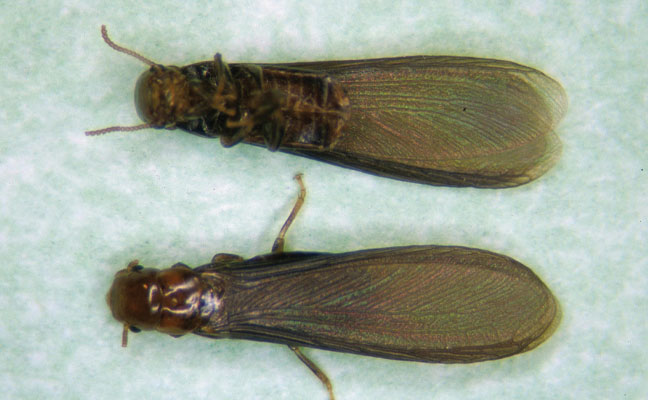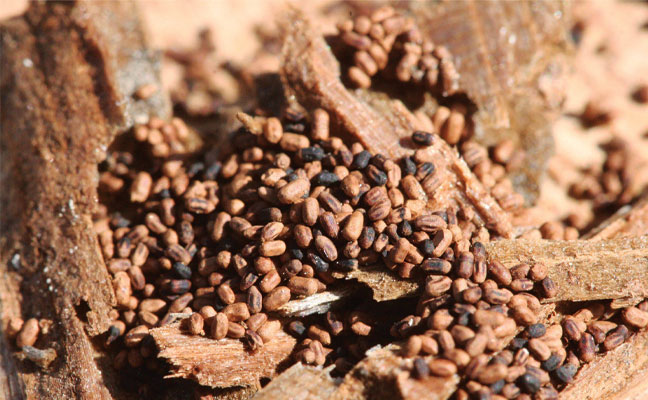Localized, or spot, treatments for drywood termites (Incisitermes minor) have become an increasingly popular alternative to whole-structure fumigation. One promising new tool in this approach is the use of chitin synthesis inhibitors (CSIs).
A recent study from the University of California, Riverside, examined the efficacy of bistrifluron, a CSI that disrupts the molting process in termites by inhibiting the formation of chitin, a key component of their exoskeletons.
Image: Termite Alates

How it works
The research team used western drywood termite colonies to test the chemical. For the study, bistrifluron was dissolved in acetone and applied to small blocks of dried Douglas fir sapwood. These treated blocks were then offered to laboratory-reared colonies.
Because bistrifluron is a slow-acting, non-repellent chemical, the termites readily fed on the treated wood and shared it with their nestmates through trophallaxis (the social sharing of food). As the termites attempted to molt, the chemical took effect, preventing the formation of a new exoskeleton and ultimately leading to their death.
Image: Termite Frass

The study’s findings
The results of the study were significant. Colonies that were fed wood treated with bistrifluron at a concentration of 1,000 parts per million (ppm) were completely eliminated in approximately two months. Lower concentrations also showed efficacy, though over a longer period.
The slow-acting nature of the chemical is a key advantage. It ensures that the active ingredient is spread throughout the entire colony, including to the queen and soldiers who may not feed directly on the treated wood. This comprehensive distribution is crucial for achieving total colony collapse.
The future of application
While the study proves the chemical’s efficacy, the next step is to develop a practical method for applying it in the field. The researchers suggest that formulating bistrifluron into a dust or liquid that can be injected directly into termite galleries could be an effective delivery method.
This research represents a promising advancement in localized drywood termite control, offering pest management professionals a potential new tool that is both effective and targeted.
Authored By
Dr. S. Demetriou, Dr. D.H. Choe, and Dr. M. K. Rust, University of California, Riverside
Leave A Comment